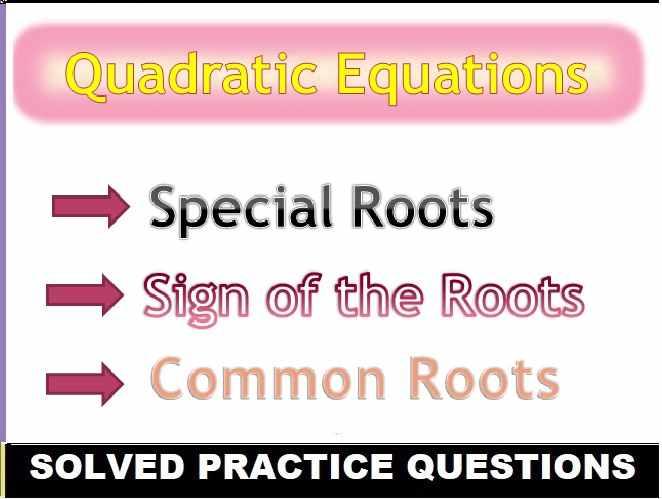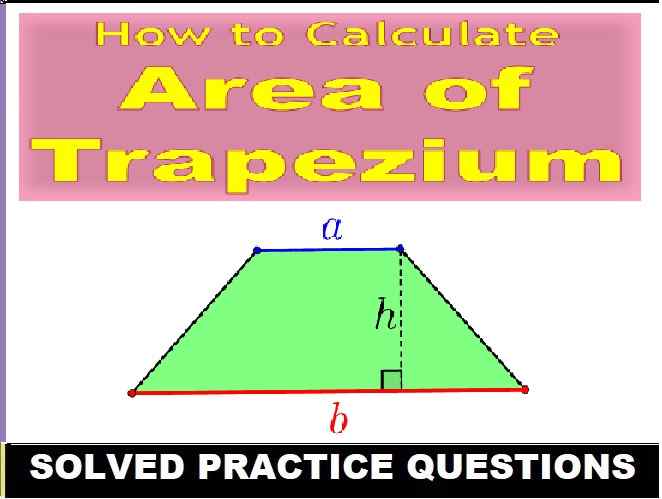Human Reproduction MCQ Type Questions for ISC Class 12 Biology .These MCQ / Objective Type Questions is based on latest reduced syllabus according 2021-22 session on bifurcated pattern. Main motto of MCQ Type Question is cracking the next upcoming exam of council. Visit official website CISCE for detail information about ISC Board Class-12 Biology.
MCQ Type Questions for ISC Class 12 Biology Human Reproduction
Question-1
| Board | ISC |
| Class | 12th (XII) |
| Subject | Maths |
| Chapter Name |
Human Reproduction |
| Syllabus | on bifurcated syllabus (after reduction) |
| bifurcated pattern |
Semester-1 |
| Session | 2021-22 |
| Topic | MCQ / Objective Type Question |
Human Reproduction MCQ for ISC Class 12 Biology
Name of hormones who triggered Menstruation by a sudden decline in the amount of hormone secreted by corpus luteum.
(a) Luteinizing hormone
(b) Follicle stimulating hormone
(c) Estrogen
(d) Progesterone
Answer (d) Progesterone
Question-2
Morula is a developmental stage:
The structures derived from ectoderm are
(i) pituitary gland
(ii) cornea
(iii) kidneys
(iv) notochord
(a) (i) and (iii)
(b) (ii) and (iii)
(c) (i) and (ii)
(d) (ii) and (iv).
Answer:(c) (i) and (ii)
Question 5.
Name of organ in mammals acts as an endocrine gland after ovulation ?
(a) Stroma
(b) Germinal epithelium
(c) Vitelline membrane
(d) Graafian follicle
Answer:(d) Graafian follicle
Question 6.
The Name of solid mass of 8-16 cells formed by zygote after mitotic divisions is called
(a) blastula
(b) gastrula
(c) morula
(d) none of these.
Answer:(c) morula
Question 7.
Acrosome in Human sperm is a type of
(a) lysosome
(b) flagellum
(c) ribosome
(d) basal body.
Answer:(a) lysosome
Question 8
Which of the following hormones is not a secretory product of human placenta ?
(a) Human chorionic gonadotropin
(b) Prolactin
(c) Estrogen
(d) Progesterone
Answer:-(b) Prolactin
Question 9
Which one is released from the ovary ?
(a) Primary oocyte
(b) Secondary oocyte
(c) Graafian follicle
(d) Oogonium
Answer:-(b) Secondary oocyte
Question 10
During oogenesis, each diploid cell produces
(a) four functional eggs
(b) two functional eggs and two polar bodies
(c) one functional egg and three polar bodies
(d) four functional polar bodies.
Answer:-(c) one functional egg and three polar bodies
Question-11
Which of the following hormone maintains the function of male sex accessory gland and ducts?
(a) Estrogen
(b) Androgen
(c) Progesterone
(d) Luteinizing hormone
Answer :- Androgen
Question 12
Layers of an ovum from outside to inside is
(a) corona radiata, zona pellucida and vitelline membrane
(b) zona pellucida, corona rodiata and vitelline membrane
(c) vitelline membrane, zona pellucida and corona radiata
(d) zona pellucida, vitelline membrane and corona radiata.
Answer: (a) corona radiata, zona pellucida and vitelline membrane
Question 13.
At what stage of life is oogenesis initiated in a human female ?
(a) At puberty
(b) During menarch
(c) During menopause
(d) During embryonic development
Answer:(d) During embryonic development
Question 14.
The sperms undergo physiological maturation, acquiring increased motility and fertilising capacity in
(a) seminiferous tubules
(b) vasa efferentia
(c) epididymis
(d) vagina.
Answer:(c) epididymis
Question 15
Seminal plasma, the fluid part of semen, is contributed by
(i) seminal vesicle
(ii) prostate
(iii) urethra
(iv) bulbourethral gland
(a) (i) and (ii)
(b) (i), (ii) and (iv)
(c) (ii), (iii) and (iv)
(d) (i) and (iv)
Answer:(b) (i), (ii) and (iv)
Question 16
The process of release of spermatozoa from Sertoli cells into cavity of the seminiferous tubules is called
(a) spermiogenesis
(b) spermatogenesis
(c) spermatocytogenesis
(d) spermiation.
Answer:(d) spermiation.
Question 17
The principal tail piece of human sperm shows the microtubular arrangement of
(a) 7 + 2
(b) 9 + 2
(c) 11 + 2
(d) 13 + 2
Answer:(c) 11 + 2
Question 18
In spermatogenesis, reduction division of chromosome occurs during conversion of
(a) spermatogonia to primary spermatocytes
(b) primary spermatocytes to secondary spermatocytes
(c) secondary spermatocytes to spermatids
(d) spermatids to sperms.
Answer:(b) primary spermatocytes to secondary spermatocytes
Question 19.
Ovulation in the human female normally takes place during the menstrual cycle
(a) at the mind secretory phase
(b) just before the end of the secretory phase
(c) at the beginning of the proliferative phase
(d) at the end of the proliferative phase.
Answer:(d) at the end of the proliferative phase.
Question 20.
After ovulation Graafian follicle regresses into
(a) corpus atresia
(b) corpus callosum
(c) corpus luteum
(d) corpus albicans
Answer:(c) corpus luteum
Question 21
Immediately after ovulation, the mammalian egg is covered by a membrane known as
(a) chorion
(b) zona pellucida
(c) corona radiata
(d) vitelline membrane.
Answer:(c) corona radiata
Question 22.
Which one of the following events is correctly matched with the time period in a normal menstrual cycle ?
(a) Release of egg : 5 th day
(b) Endometrium regenerates : 5 – 10 days
(c) Endometrium secretes nutrients for implantation: 11 – 18 days
(d) Rise in progesterone level : 1 – 15 days
Answer:(b) Endometrium regenerates : 5 – 10 days
Question 23
If mammalian ovum fails to get fertilised, which one of the following is unlikely ?
(a) Corpus luteum will distintegrate.
(b) Progesterone secretion rapidly declines.
(c) Estrogen secretion increases.
(d) Primary follicle starts developing.
Answer:(c) Estrogen secretion increases.
Question 24
A human female reaches menopause aroung the age of
(a) 50 years
(b) 15 years
(c) 70 years
(d) 25 years.
Answer:(a) 50 years
Question 25
A reaction of granules content which harden the zona pellucida and ensures sure block to polyspermy is
(a) acrosomal reaction
(b) cortical reaction
(c) acrosin reaction
(d) bindin reaction.
Answer:-(b) cortical reaction
Question 26.
In oocyte secondary maturation occurs in
(a) ovary
(b) abdominal cavity
(c) Fallopian tube
(d) uterus.
Answer: (c) Fallopian tube
Question 27.
Besides activating the egg another role of a sperm is to carry to egg
(a) RNA
(b) mitochondria
(c) DNA
(d) ribosomes.
Answer:(c) DNA
Question 28.
Preparation of sperm before penetration of ovum is
(a) spermiation
(b) cortical reaction
(c) spermiogenesis
(d) capacitation.
Answer:(a) spermiation
Question 29
Spermiation is the process of the release of sperms from
(a) seminiferous
(b) vas deferens
(c) epididymis
(d) prostate gland
Answer: (a) seminiferous
Question 30.
Mature Graafian follicle is generally present in the ovary of a healthy human female around
(a) 5-8 day of menstrual cycle
(b) 11-17 day of menstrual cycle
(c) 18-23 day of menstrual cycle
(d) 24-28 day of menstrual cycle.
Answer-31
(b) 11-17 day of menstrual cycle
Question 32
Acrosomal reaction of the sperm occurs due to
(a) its contact with zona pellucida of the ova
(b) reactions within the uterine environment of the female
(c) reactions within the epididymal environment of the male
(d) androgens produced in the uterus.
Answer: (a) its contact with zona pellucida of the ova
Question 33
Which among the following has 23 chromosomes ?
(a) Spermatogonia
(b) Zygote
(c) Secondary oocyte
(d) Oogonia
Answer:(c) Secondary oocyte
Question 34
Which of the following hormones is not secreted by human placenta ?
(a) hCG
(b) Estrogens
(c) Progesterone
(d) LH
Answer:(d) LH
Question 35.
The vas deferens receives duct from the seminal vesicle and opens into urethra as
(a) epididymis
(b) ejaculatory duct
(c) efferent ductile
(d) ureter
Answer:-(b) ejaculatory duct
Question 36
Urethral meatus refers to the
(a) urinogenital duct
(b) opening of vas deferens into urethra
(c) external opening of the urinogenital duct
(d) muscles surrounding the urinogenial duct.
Answer: (c) external opening of the urinogenital duct
Question 37
Morula is a developmental stage
(a) between the zygote and blastocyst
(b) between the blastocyst and gastrula
(c) after the implantation
(d) between implantation and parturition.
Answer: (a) between the zygote and blastocyst
Question 38.
The membranous cover of the ovum at ovulation is
(a) corona radiata
(b) zona radiata
(c) zona pellucida
(d) chorion.
Answer: (a) corona radiata
Question 39.
Identify the odd one from the following
(a) Labia minora
(b) Fimbriae
(c) Infundibulum
(d) Isthmus
Answer:(a) Labia minora
Question 40.
Temperature of the scrotum which is necessary for the functioning of testis is always ________ around below body temperature.
(a) 2°C
(b) 4°C
(c) 6°C
(d) 8°C
Answer:(a) 2°C
Question 41
Which of the following is correct about mammalian testes ?
(a) Graafian follicles, Sertoli cells, Leydig’s cells
(b) Graafian follicles, Sertoli cells, Seminiferous tubules
(c) Sertoli cells, Seminiferous tubules, Leyding’s cells
(d) Graafian follicle, leyding’s cells, Seminiferous tubule
Answer: (c) Sertoli cells, Seminiferous tubules, Leyding’s cells
Question 42
The nutritive cells found in seminiferous tubules are
(a) Leydig’s cells
(b) atretic follicular cells
(c) Sertoli cells
(d) chromaffin cells.
Answer:-(c) Sertoli cells
Question 43
Sertoli cells are regulated by the pituitary hormone known as
(a) LH
(b) FSH
(c) GH
(d) prolactin.
Answer:-(b) FSH
Question 44
The head of the epididymis at the head of the testis is called
(a) cauda epididymis
(b) vas deferens
(c) caput epididymis
(d) gubernaculum.
Answer:-(c) caput epididymis
Question 45.
Seminal plasma in humans is rich in
(a) fructose and calcium but has no enzymes
(b) glucose and certain enzymes but has no calcium
(c) fructose and certain enzymes but poor in calcium
(d) fructose, calcium and certain enzymes.
Answer:-(d) fructose, calcium and certain enzymes.
Question 46
Prostate glands are located below
(a) gubernaculum
(b) seminal vesicles
(c) epididymis
(d) bulbourethral glands
Answer:-(b) seminal vesicles
Question 47
The Main function of the secretion of prostate gland is to
(a) inhibit sperm activity
(b) attract sperms
(c) stimulate sperm activity
(d) none of these.
Answer: (c) stimulate sperm activity
Question 48
Bartholin’s glands are situated
(a) on the either side of vagina in humans
(b) on either side of vas deferens in humans
(c) on either side of penis in humans
(d) on either side of Fallopian tube in humans.
Answer:(a) on the either side of vagina in humans
Question 49.
In human adult females oxytocin
(a) stimulates pituitary to secrete vasopressin
(b) causes strong uterine contractions during parturition
(c) is secreted by anterior pituitary
(d) stimulates growth of mammary glands.
Answer: (b) causes strong uterine contractions during parturition
Question 50
The third stage of parturition is called “after-birth”. In this stage
(a) excessive bleeding occurs
(b) fetus is bom and cervix and vagina contraction to normal condition happens
(c) fetus is bom and contraction of uterine wall prevents excessive bleeding
(d) placenta is expelled out.
Answer: (d) placenta is expelled out.
-: End of Human Reproduction MCQ Type Questions for ISC Class 12 Biology :-
-: also visit :-
- ISC Class-12 Text book Solutions, Notes , Syllabus, Paper
- MCQ Type Questions ISC Class-12 Semester-1 Session 2021-22
Please share with your ISC friends if it is helpful
Thanks



Here answers of some questions are wrong otherwise it’s helpful 👍.
Although we have try our best to do more and more resources for ICSE / ISC even if any error sorry for this . we will again analysis the solutions if such error occure